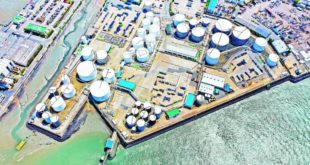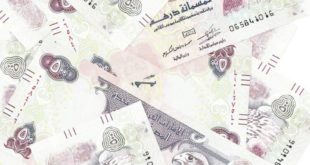The World Bank revealed in the latest issue of its “Summary of Migration and Development” report that the total flows of remittances of Arab expatriates to their countries amounted to about $64 billion in 2022, declining by 0.03%, or $2 billion, compared to $66.14 billion for 2021.
The report indicated that remittances from expatriates to the Middle East and North Africa region decreased by 3.8% to $64 billion in 2022, after recording a strong growth rate of 12.2% in 2021. The report attributed the decrease in remittances mainly to the decline in remittances to both Egypt Algeria and Jordan. While remittance flows to the countries of the Maghreb witnessed slight gains (with the exception of Algeria), which compensated for some of the decline.
According to the report, remittance flows to the region are expected to increase by 1.7% and 1.8% for the years 2023 and 2024, respectively. Future prospects vary among subgroups of countries in the region, depending on the identity of the dominant host countries and the degree of exposure to high inflation and financial market volatility.
The cost of sending is $200
The average cost of sending $200 to the region was 6.2% in the last quarter of 2022, down from 6.4% a year earlier, according to the report.
The report pointed out that it is estimated that officially registered remittance flows to low- and middle-income countries will increase by 1.4% to $656 billion in 2023, expecting a decline in economic activity in remittance-sending countries, which will limit job opportunities and increase the wages of expatriates.
Egypt ranked first in the value of expatriate remittances between Arab countries in 2022 ($28.3 billion), and Morocco came second ($11.2 billion). Lebanon ranked third ($6.4 billion), Jordan fourth ($5 billion), the West Bank fifth ($4.1 billion), Yemen sixth ($3.7 billion), Tunisia seventh ($3.1 billion), and Algeria eighth ($1.8 billion). Qatar ninth ($1 billion), and Iraq tenth ($624 million).
According to World Bank data, Lebanon ranked first in terms of the percentage of remittances from the GDP (35.7%), followed by the West Bank and Gaza second with 21.8%, Jordan third with 10.2%, Egypt fourth with 8.1%, Morocco fifth with 6.6%, and Tunisia sixth. With a rate of 6%, Djibouti seventh with a rate of 1.5%, Qatar eighth with a rate of 0.8%, Algeria ninth with a rate of 0.5%, while Iraq came tenth with a rate of 0.2%.
external resource flows
The report indicated that “remittances were the largest source of external resource flows for the development of the Middle East and North Africa; As it represented 57% of total inflows in 2022, exceeding the sum of official development assistance and foreign direct investment, ”expecting that remittances and official development assistance will remain vital to the region in the medium term, given that the uncertainty of the war in Ukraine has been transferred to global expectations and expectations private flows. FDI inflows to the region increased by 70% in 2022, mainly driven by a sharp rise in inflows to Egypt, which recorded an annual gain of 123%. The rise in this type of investment in Egypt, according to the report, reflects a boom in start-up investments and an increase in the capital of existing companies, in addition to the increase in the proceeds of selling local entities to non-residents. Egypt was the largest recipient of FDI inflows in the region; As it accounted for 87% of the total of these flows in the region in 2022.
 Media ININ Economy We Trust
Media ININ Economy We Trust








